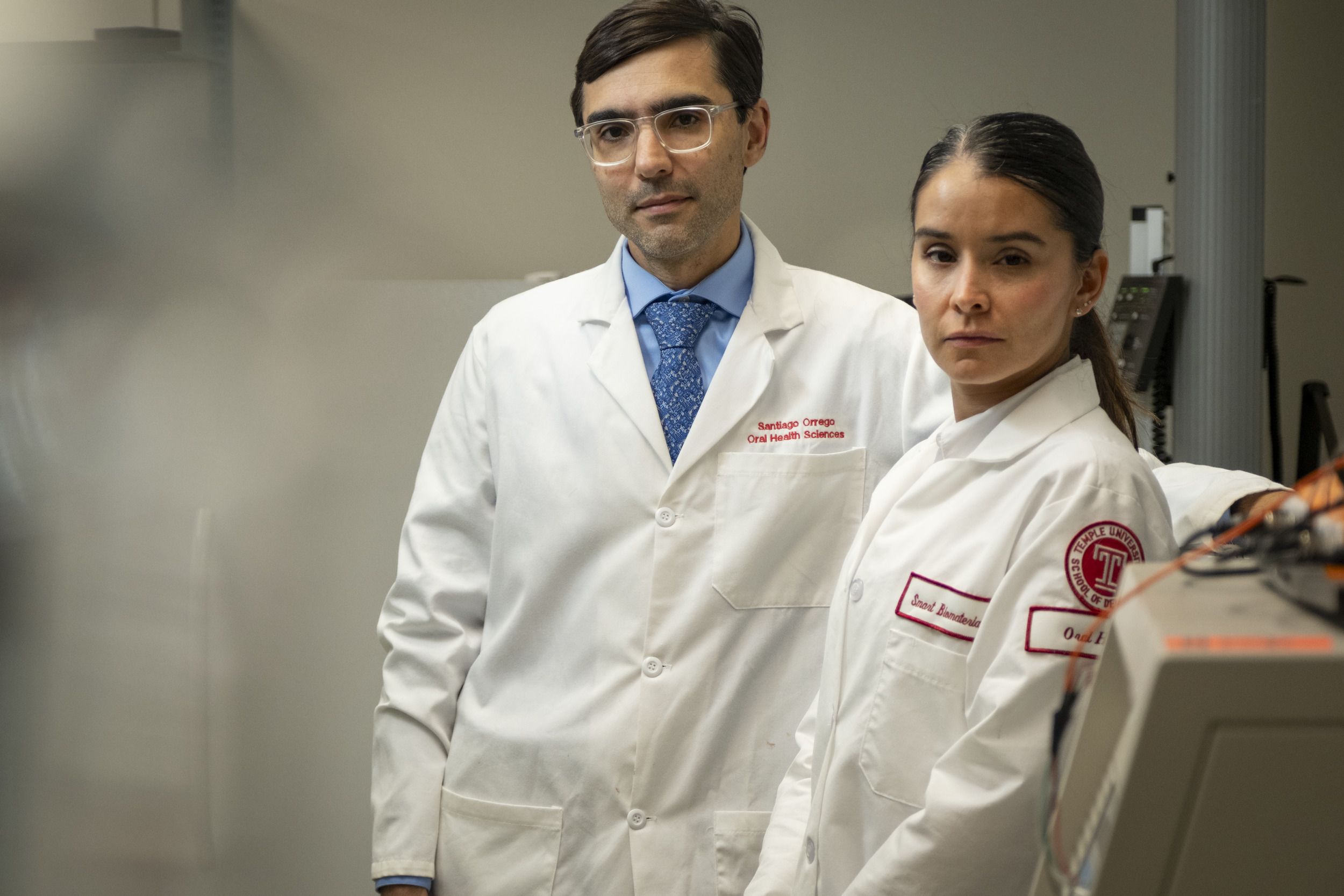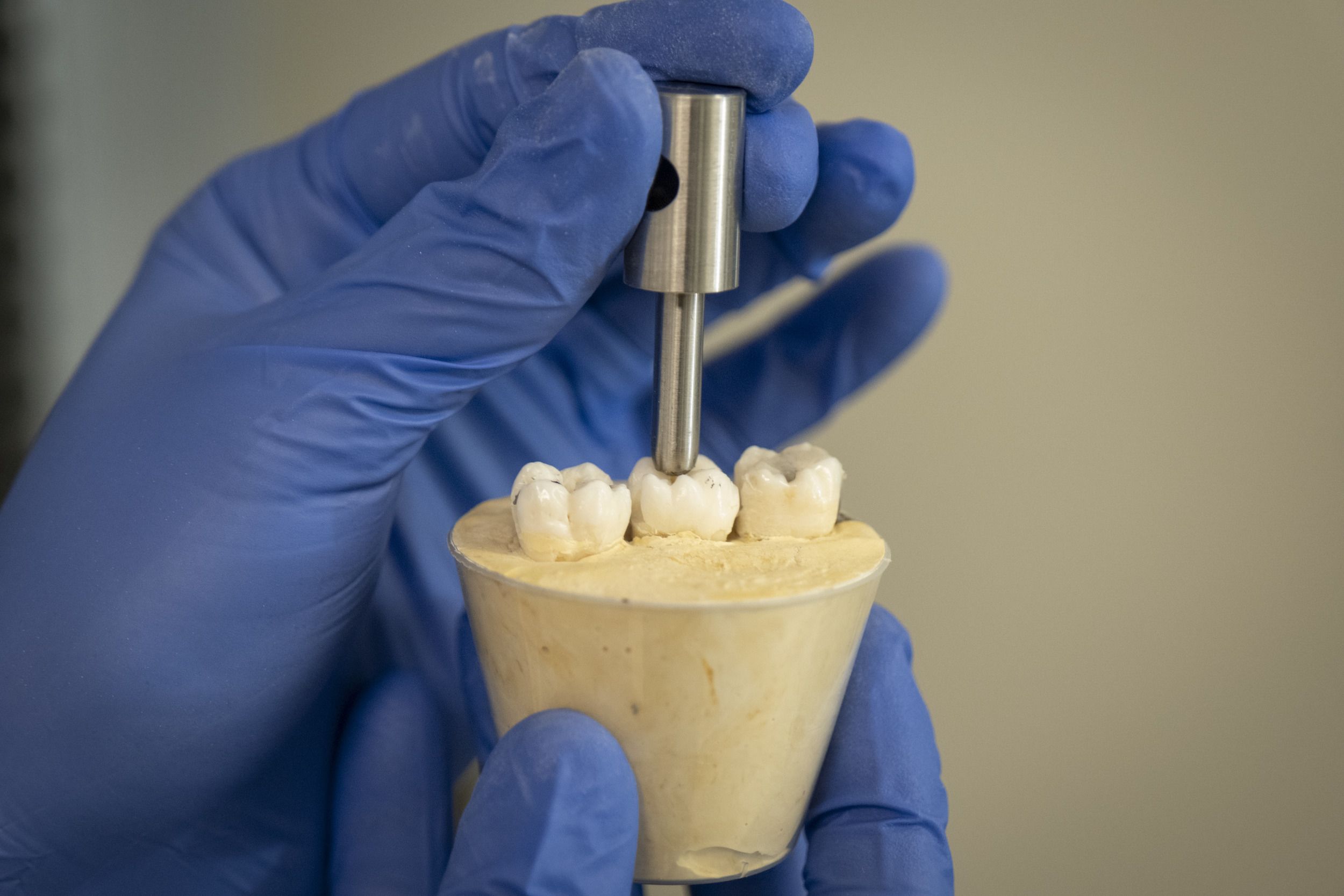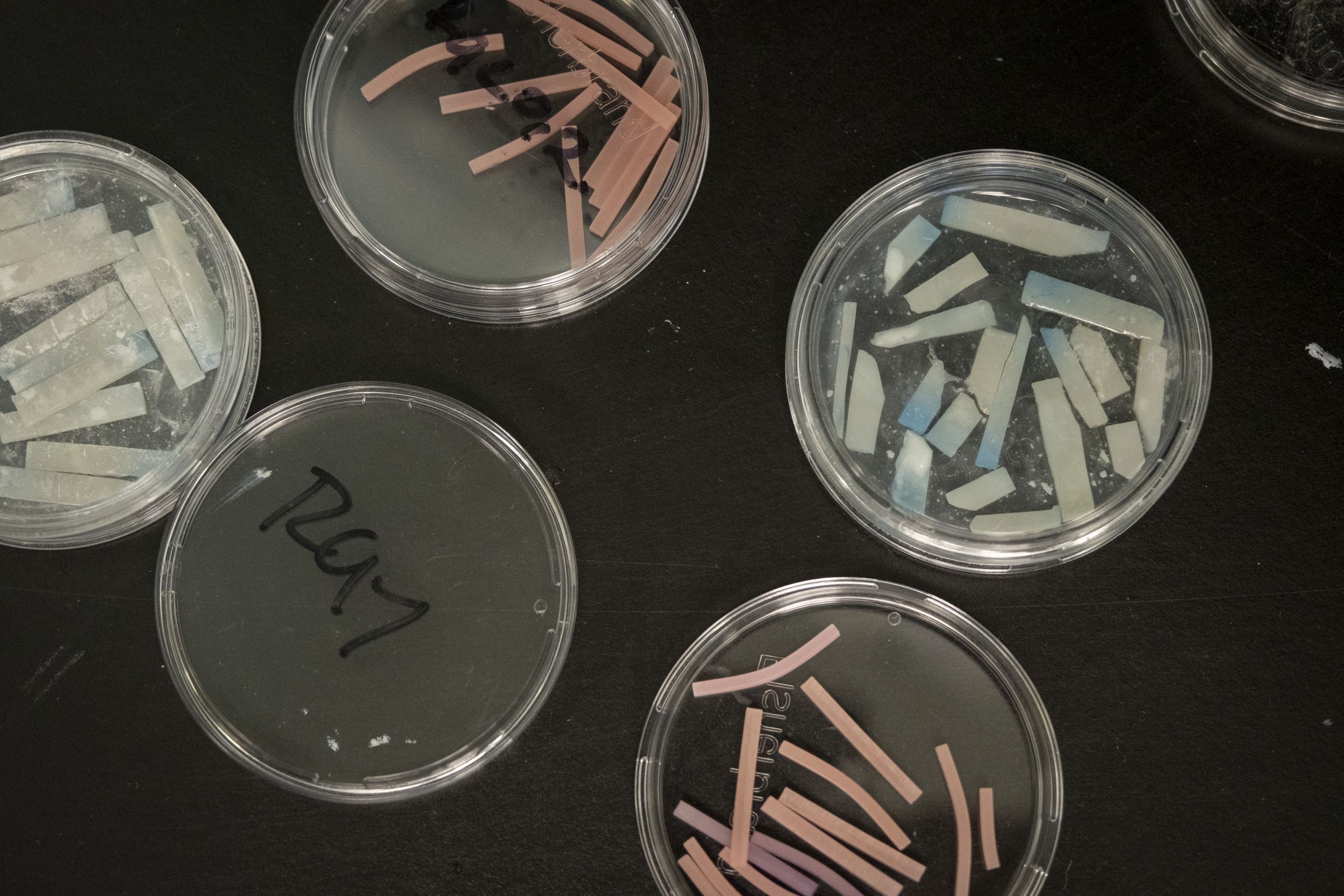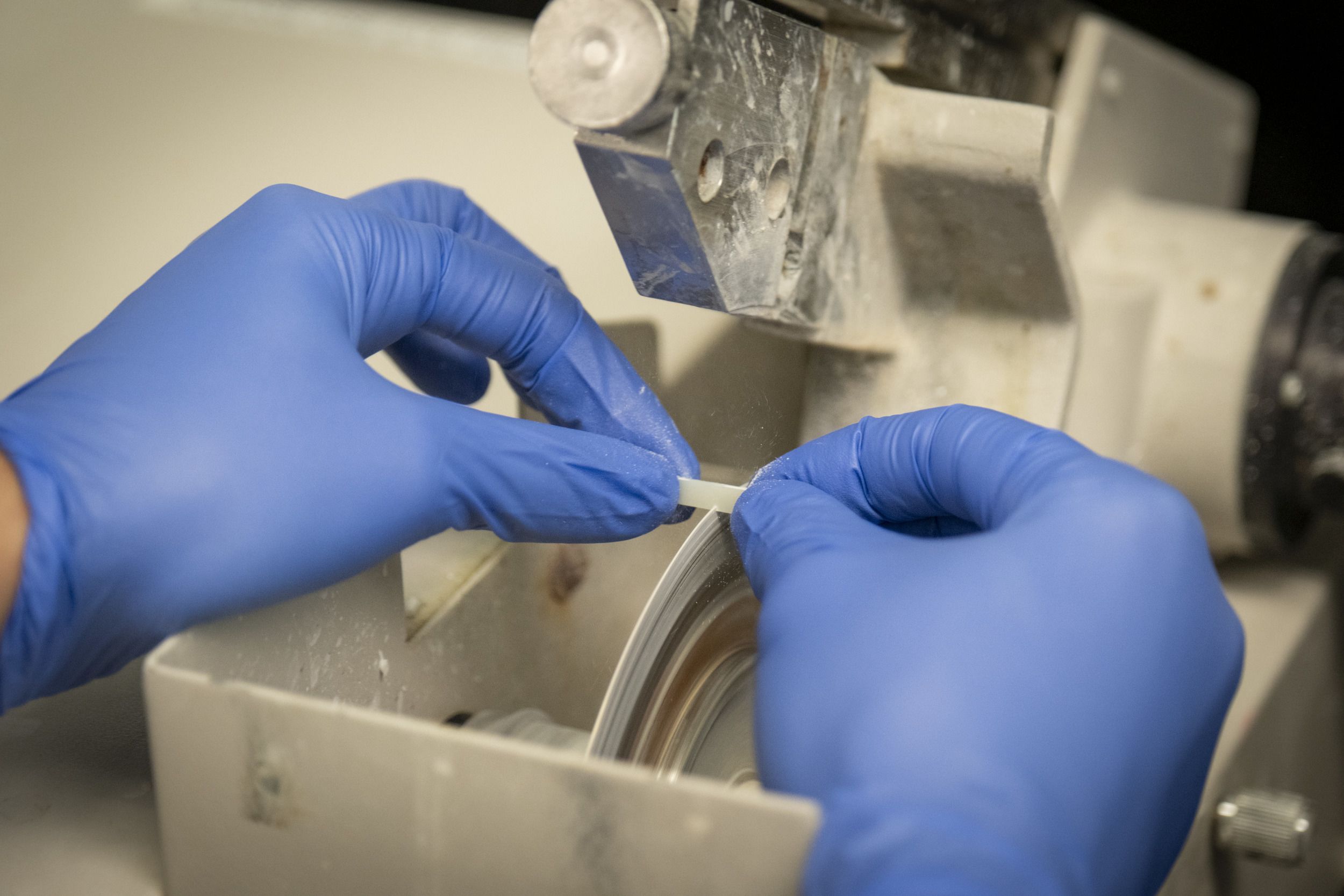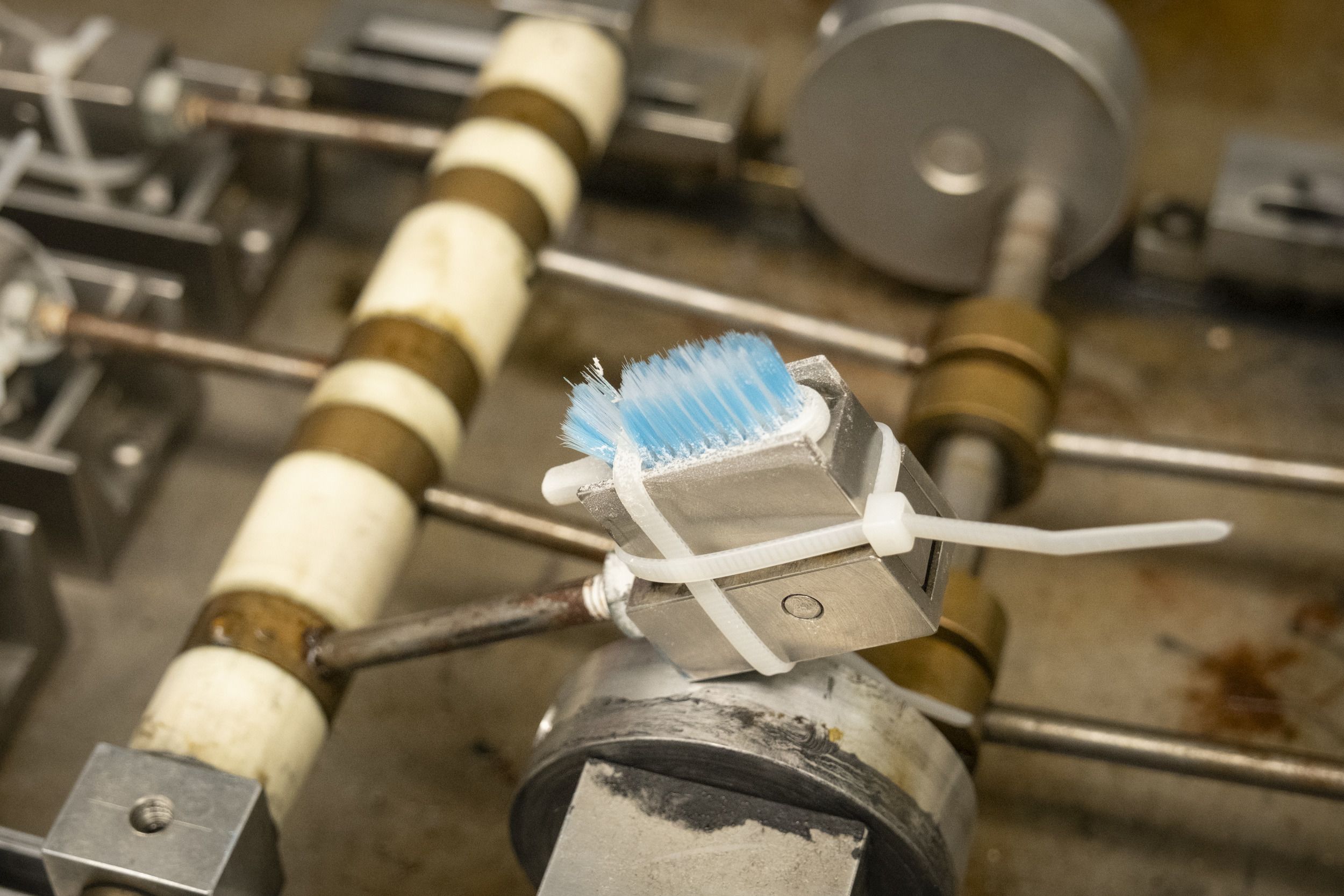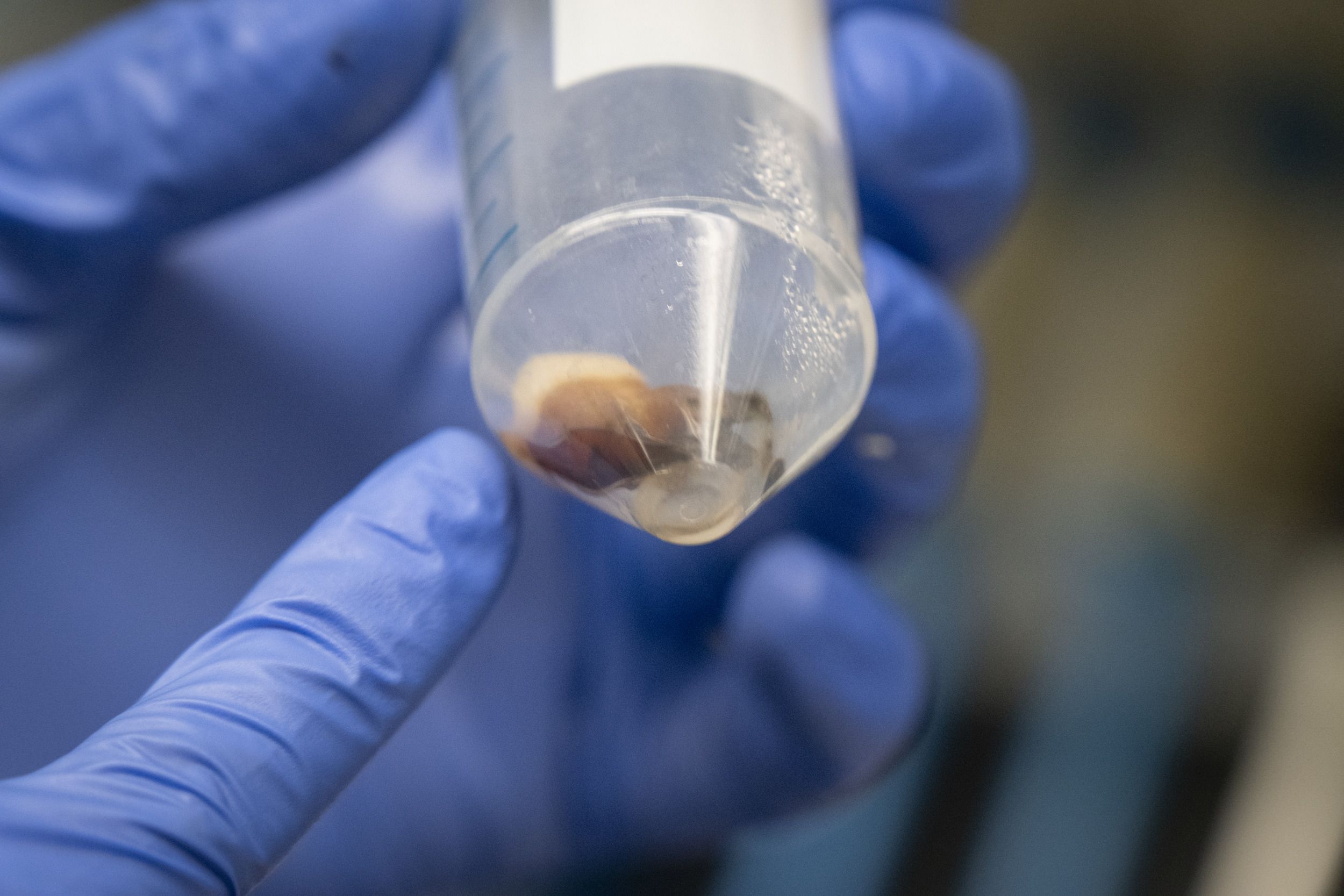Regenerating bone tissue lost to periodontal disease
By Ayana Jones
Photography by Joseph V. Labolito
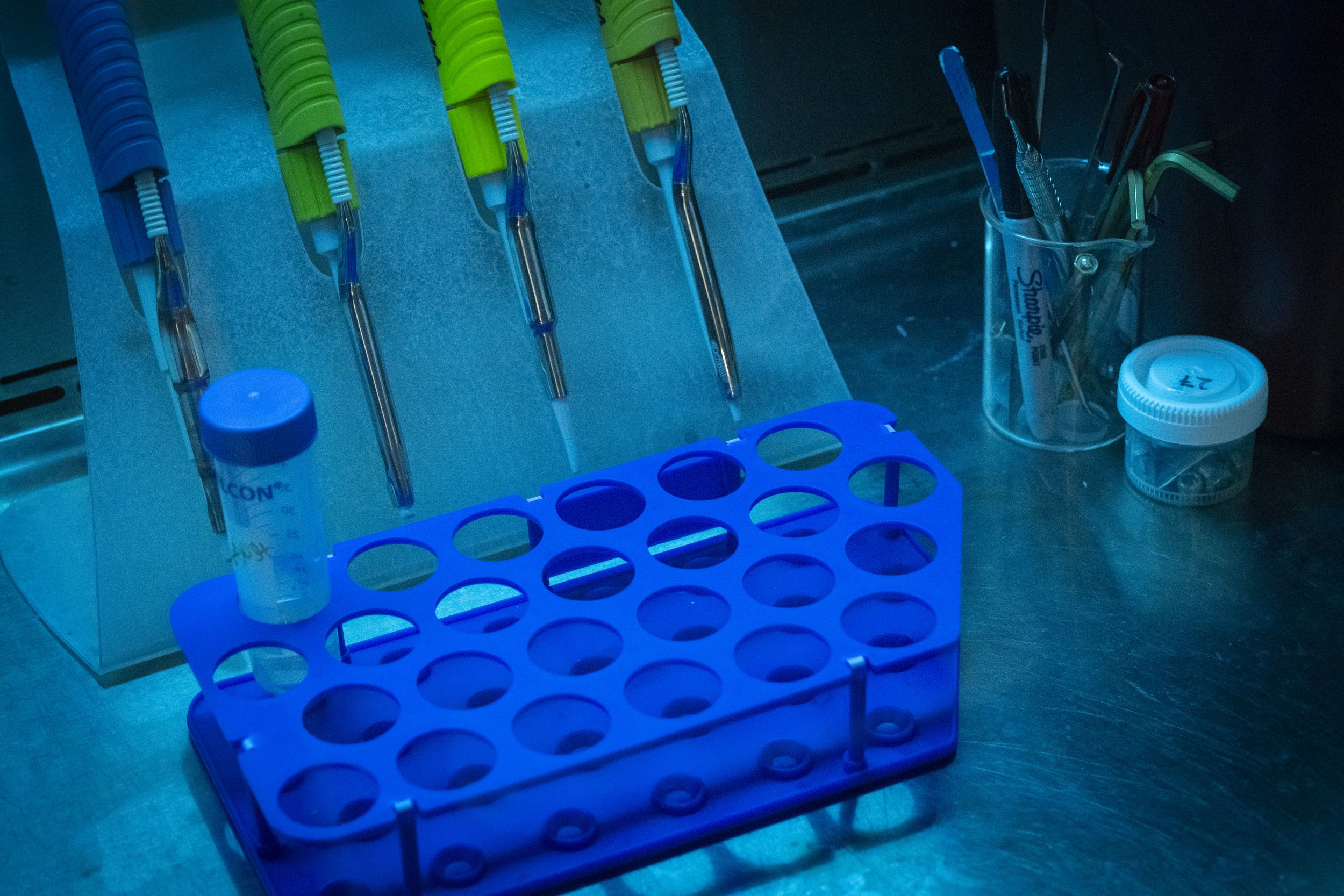
Santiago Orrego and Carolina Montoya created Ambrilux Dental Gel as a noninvasive solution to addressing gum disease.
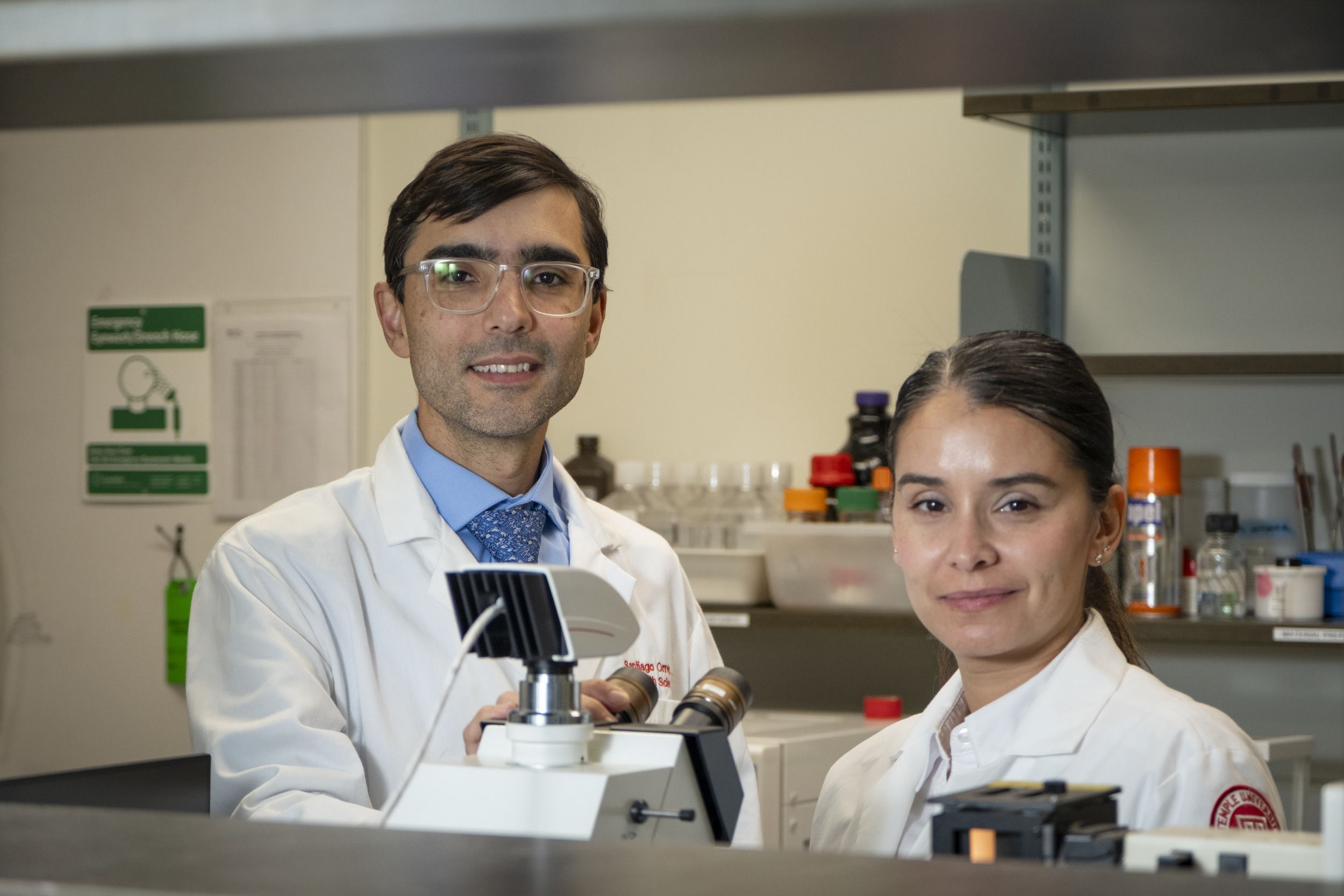
As many people who are dealing with periodontal disease end up having to undergo surgery, Santiago Orrego and Carolina Montoya have developed a noninvasive way of tackling the condition via smart dental biomaterials.
According to the Centers for Disease Control and Prevention, more than 47% of adults older than 30 have some form of gum disease, which is the most common cause of tooth loss.
As an alternative to surgery, Orrego and Montoya have created the Ambrilux Dental Gel, which regenerates bone tissue lost to periodontal disease and prevents further infections. Research for the gel was supported with funding from Philadelphia University City Science Center and internal funding from the school. Oral Biolife Inc., a company based in Bethlehem, Pennsylvania, has acquired a license from Temple University to commercialize the technology.
“This gel aims to provide the same solution that the surgery offers, but without costly, painful, invasive treatments,” said Orrego, assistant professor at the Temple University Kornberg School of Dentistry and principal investigator of the school’s Smart Biomaterials Research Laboratory.
A smart concept
Kornberg researchers specialize in developing smart dental biomaterials to enhance the efficacy of dental treatments and diagnosis of different oral diseases and injuries. Smart biomaterials pose a unique feature as they can change their properties in response to external stimuli to provide therapeutics and benefits to dental treatments.
“There's a growing trend in research to harness smart biomaterials for more effective and advanced treatments,” Orrego stated.
Ambrilux Dental Gel is part of a class of smart biomaterials known as piezoelectric materials, which produce an electrical charge in response to mechanical stimulations, such as mastication, movement or vibrations.
Orrego says an applicator can be used to place the gel made of a jelly-like substance mixed with piezoelectric nanoparticles between a person’s teeth and the gums.
“The concept behind the biomaterial is that by adding these smart particles inside the gel, the biomechanical movements stimulate the particles to produce electrical charges that will stimulate bone growth,” Orrego explained.
"This innovative gel harnesses the power of smart biomaterials to stimulate natural bone regeneration, eliminating the need for invasive surgery and bone grafting while maintaining an infection-free treatment environment."
Together the duo has worked on developing this biomaterial for the last four years.
For his work, Orrego was awarded a $200,000 grant from the Science Center’s QED Proof-of-Concept Program in 2020. This program works with regional academic and research institutions to prepare their most promising life science and healthcare technologies for commercialization.
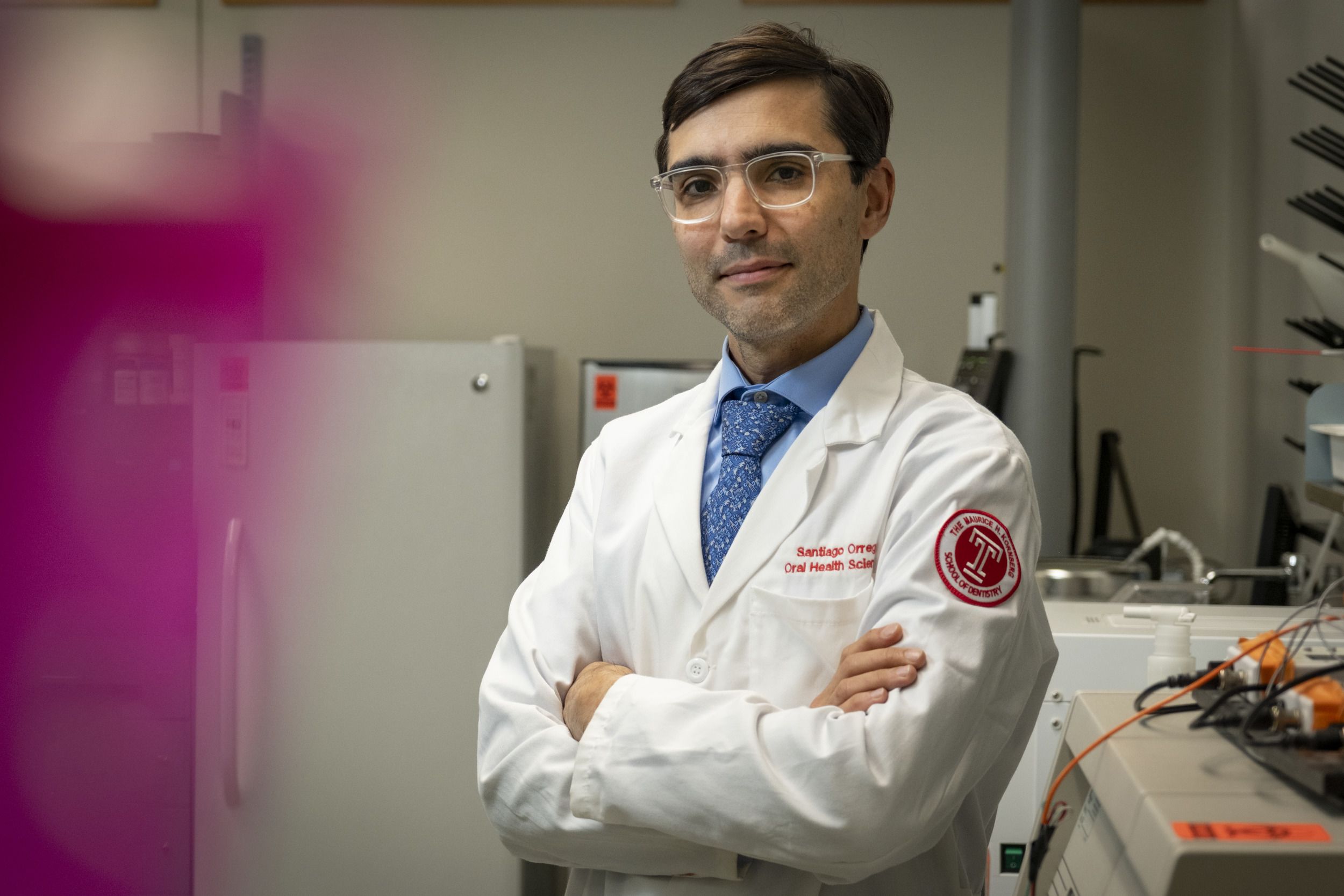
High-tech dentistry
Piezoelectric materials have been used since World War I in sonar and later to power microphones, cell phones and electric guitar pickups.
Orrego, a mechanical engineer by training, has been working on using piezoelectric technology since he came to the U.S. for his PhD in 2011.
During his time as a post-doctoral fellow at Johns Hopkins University, Orrego experimented with using piezoelectric materials for energy harvesting. He created a piezoelectric flag with the idea that wind would enable the flag to flap, causing the material to create electricity to power electronics in remote locations.
“The concept involved harnessing natural wind to make a flag vibrate, generating electricity to power small sensors for monitoring environmental signals in remote locations,” said Orrego.
Orrego and Montoya both graduated from Universidad EAFIT in Colombia.
After Orrego joined Temple in 2018 and began working with Montoya, a research associate in the Smart Biomaterials Lab, they started researching how they could use the piezoelectric technology to power antimicrobial and bone regenerative therapies.
The two engineers were captivated by the dental field, drawing inspiration from studying how dental tissues function from an engineering perspective.
“Enamel and dentin are extremely interesting materials since they have very unique microstructures, properties and architectural behavior,” Montoya explained.
“It’s fascinating to understand the principles of how these materials behave so that we can replicate them and fabricate our own bioinspired synthetic materials.”
“Enamel and dentin are extremely interesting materials since they have very unique microstructures, properties and architectural behavior.
It’s fascinating to understand the principles of how these materials behave so that we can replicate them and fabricate our own bioinspired synthetic materials.”
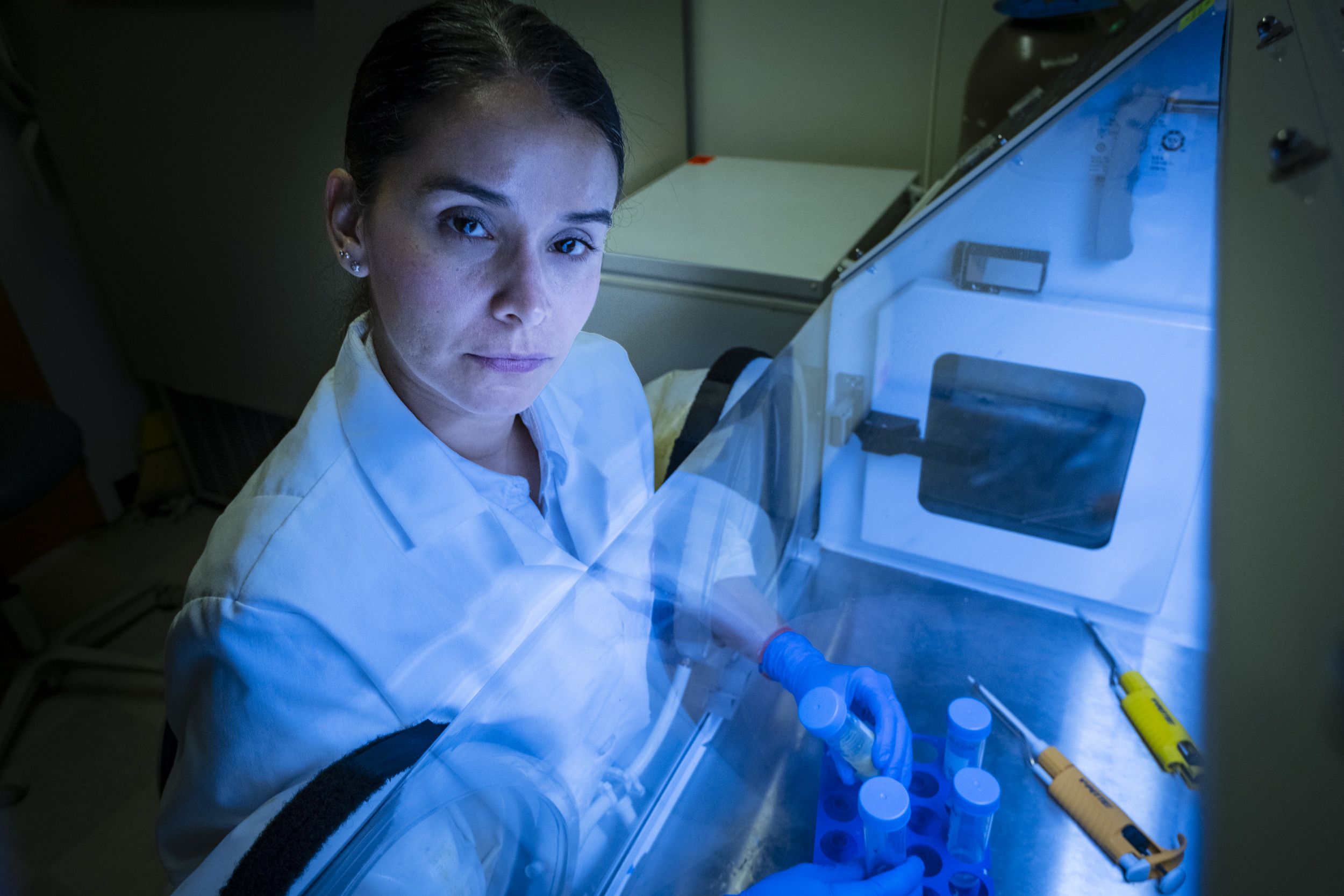
Looking toward the future
The researchers have also used this strategy of working with piezoelectric materials to develop bonding agents for use in dental fillings and dentures.
“The dental field is slowly shifting towards developing bonding agents and composites with antimicrobial therapies, but right now the priority is periodontal disease because it's very common and we have many people in need of a realistic solution,” Orrego said.
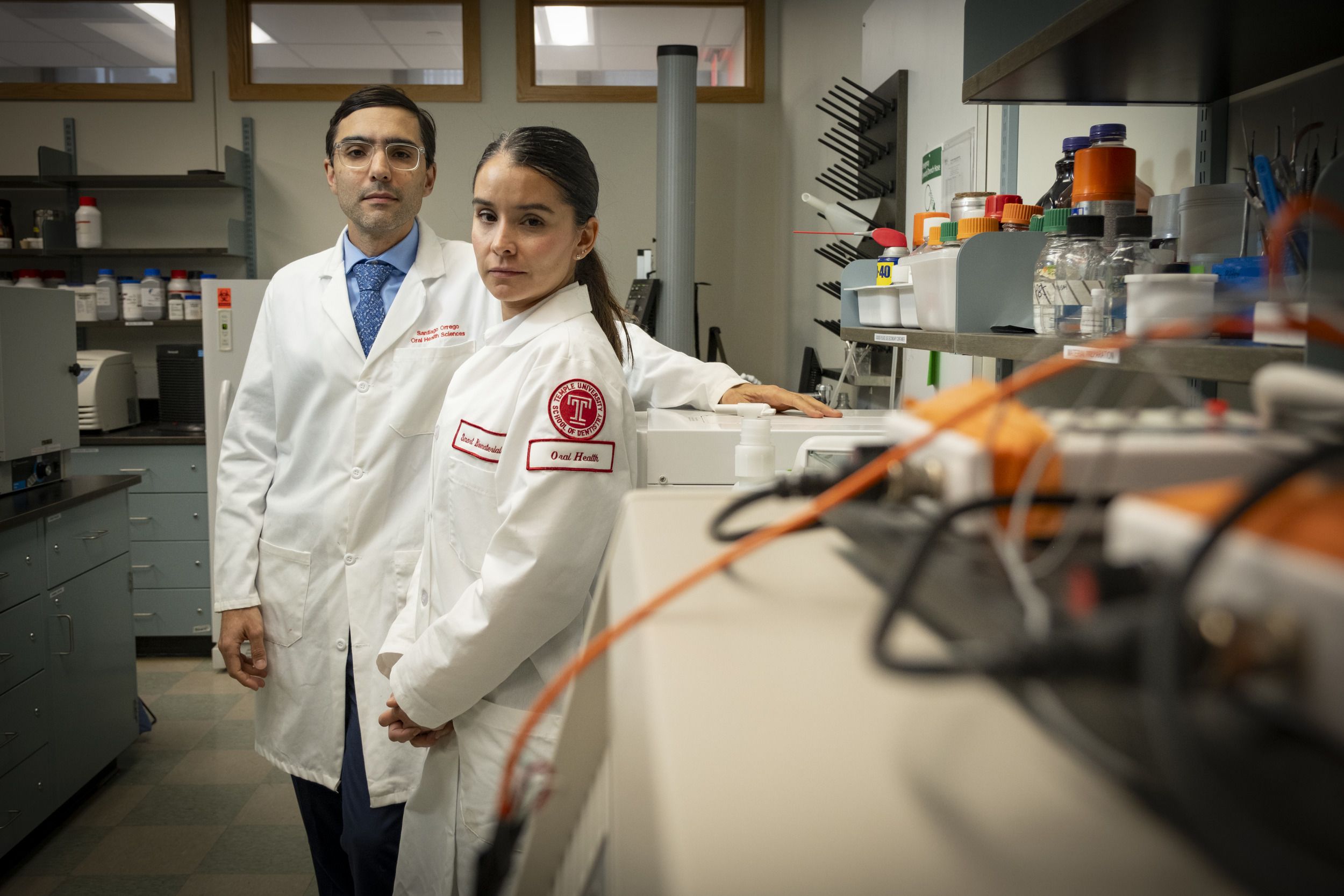
Oral Biolife, the licensee, is working to secure FDA clearance for a commercial launch in 2026. Once Ambrilux Dental Gel is FDA approved, dentists can treat their patients with the product.
The gel can also be used by veterinarians on dogs and cats experiencing periodontal disease, which is also very common for companion animals. Oral Biolife has secured an animal health partner, and they will be launching the product for companion animals in 2025.
“FDA approval of this groundbreaking hydrogel would mark a significant leap forward in periodontal care, offering patients a minimally invasive solution that promotes bone regeneration and could set a new standard for infection-free, regenerative treatments,” Orrego said.
Also read
Determined dentistry: Under faculty mentorship, students in Temple University’s Kornberg School of Dentistry gain clinical experience and participate in advanced research efforts in state-of-the-art facilities to meet the demands of the rapidly changing practice of dentistry and provide top-level care to patients.
Taking flight: The Innovation Nest at Temple University advances new discoveries, accelerates start-up growth, and connects the Temple community to the surrounding entrepreneurial and investment ecosystem.
Become an Owl: Learn more about applying for one of our undergraduate, graduate or professional programs.
News and more: Find out about what's going on at Temple University.


